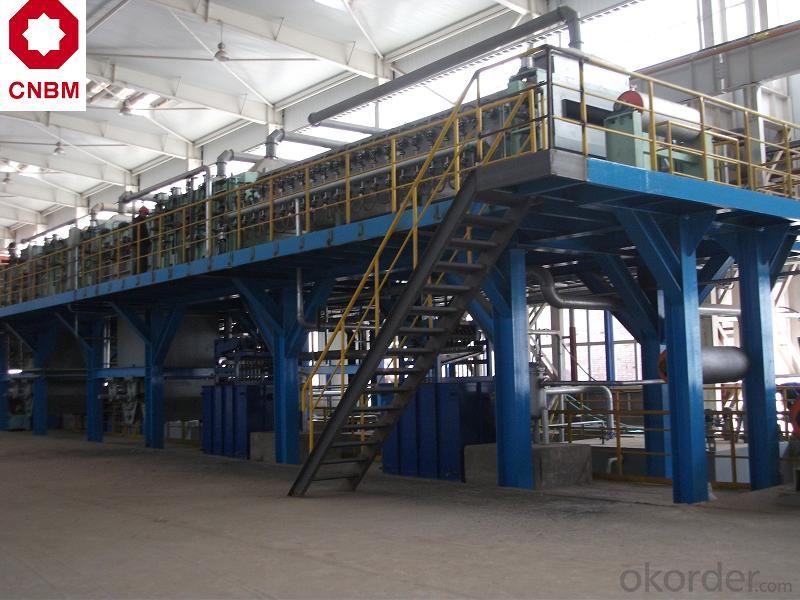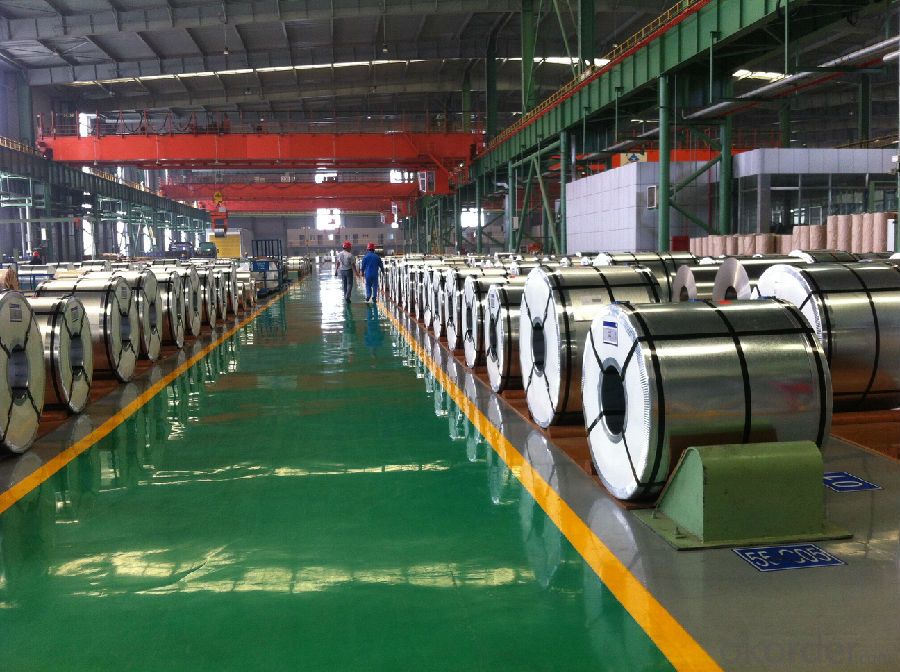Prime Tinplate for Industrial Usage, MR, 2.8/2.8g/M2
- Loading Port:
- China main port
- Payment Terms:
- TT OR LC
- Min Order Qty:
- 25 m.t.
- Supply Capability:
- 50000 m.t./month
OKorder Service Pledge
OKorder Financial Service
You Might Also Like
Item specifice
1.Usage
Tinplate is widely used for making all types of containers, containing industrial usage such as paint can, oil can, aerosol cans etc., and food cans like milk powder cans, tomato paste can, dry food cans etc.
2.Tinplate production Process
cold rolling mill---degreasing production line---tension leveler---batch annealing furnaces/continuous annealing line---tin coating line---cutting line---stock area
3. Specification
standard: DIN EN10202
Material: MR /SPCC
Thickness available: 0.16-0.50MM
Width available: 600~1050MM
Temper grade: T1 – DR8
Tin coating: ordinary 2.8g/2.8g, 5.6g/5.6g and others
Package: sea worthy export package.
Applications: Tin can for chemicals & paint cans, industrial cans, food cans
4. Our factory photo:


5. FAQ
a. what's the annual output?
about 400,000~500,000 tons per year.
b. what's your advantage than other supplier?
we have overseas warehouse all over the world, like Saudi Arabia, Oman, UAE, Kuwait, Russia, South Africa etc.
c. how long is the delivery time?
about 45~55 days for SPCC, while 60~70 days for MR material
d. how to control the quality during production process?
inside our workshop, we have MES syestem. It will show the status of each production step.
- Q:How is tinplate affected by exposure to chemicals?
- Tinplate is typically resistant to corrosion and is not easily affected by exposure to chemicals. However, certain aggressive chemicals or strong acids may cause corrosion or degradation of the tin coating over time.
- Q:How does tinplate packaging contribute to product durability?
- Tinplate packaging contributes to product durability by providing a strong and protective barrier against external factors such as moisture, air, and light. This helps to prevent oxidation, spoilage, and degradation of the product inside, ensuring its quality and extending its shelf life. Tinplate packaging also offers resistance to physical damage, such as dents or punctures, which can further enhance the durability and integrity of the packaged product.
- Q:What are the advantages of tin packaging?
- 1. good mechanical properties: tinplate cans relative to other containers, such as plastic, glass, paper containers and strength, and good rigidity, it is not easy to break. It is not only used for small sale packing, but also the main container for large transportation package.2.: excellent barrier tin barrier properties than any other materials are excellent, gas barrier properties, moisture resistance, shading and aroma were good, and the sealing is reliable, reliable protection products.
- Q:What is tin plate?
- Tinplate is made of iron tin alloy and tin is plated. Mainly used in food packaging, tin cans production, because the tin steel strength and formability and corrosion resistance of tin soldering, and beautiful appearance with a material, corrosion resistant, non-toxic, high strength and good ductility properties.
- Q:How is tinplate used in the food industry?
- Tinplate is extensively used in the food industry for packaging food products. It acts as a protective barrier between the food and the metal, preventing contamination and maintaining the food's quality and safety. Tinplate cans are commonly used for canned fruits, vegetables, meats, and other food items. Additionally, tinplate is also used for making food canisters, containers, and lids. Its corrosion resistance, durability, and ability to maintain food freshness make it an ideal material for food packaging in the industry.
- Q:How does tinplate packaging contribute to food safety?
- Tinplate packaging contributes to food safety by providing a protective barrier that prevents contamination from external factors such as light, air, and moisture. This helps to preserve the quality, freshness, and nutritional value of the packaged food. Additionally, tinplate packaging is highly resistant to corrosion, ensuring that harmful substances do not leach into the food. Its durability also prevents physical damage during transportation and storage, reducing the risk of contamination.
- Q:How is tinplate tested for quality assurance?
- Tinplate is tested for quality assurance through various methods, including visual inspection, dimensional measurements, and chemical analysis. Visual inspection involves examining the tinplate for any defects, such as scratches, dents, or discoloration. Dimensional measurements are taken to ensure the tinplate meets the required specifications, including thickness, width, and length. Chemical analysis is performed to evaluate the composition of the tinplate, checking for the presence of any impurities or contaminants. These testing methods help ensure that tinplate meets the desired quality standards before it is used in various applications.
- Q:How is tinplate used in the wine and spirits industry?
- Tinplate is commonly used in the wine and spirits industry for packaging purposes. It is often used to make metal cans or containers that hold wine and spirits. Tinplate helps to ensure the integrity and longevity of the product by providing a protective barrier against light, oxygen, and other external factors that can affect the quality and taste of the beverage. Additionally, tinplate can be decorated with various designs and branding, enhancing the overall aesthetic appeal of the packaging.
- Q:What are the main challenges in recycling tinplate?
- The main challenges in recycling tinplate include the separation of tin from the steel base, the removal of any contaminants or coatings on the tinplate, and ensuring the proper sorting and collection of tinplate waste to prevent it from ending up in landfills. Additionally, the energy-intensive process of melting and refining tinplate poses environmental concerns and requires adequate infrastructure for recycling facilities.
- Q:How does tinplate affect the environment?
- Tinplate can have both positive and negative impacts on the environment. On one hand, tinplate is a highly sustainable packaging material as it is 100% recyclable and can be reused multiple times without losing its properties. This helps in reducing waste and conserving resources. Additionally, tinplate containers offer excellent protection to the contents, preventing food spoilage and reducing the overall carbon footprint associated with food wastage. However, the production of tinplate involves mining and extracting tin, which can have adverse effects on the environment. Mining activities can lead to habitat destruction, soil erosion, and contamination of water sources if not properly managed. Furthermore, the manufacturing process of tinplate involves energy-intensive procedures, emitting greenhouse gases and contributing to climate change. To mitigate these negative impacts, it is crucial to promote responsible mining practices, prioritize energy-efficient manufacturing techniques, and encourage recycling and reuse of tinplate to minimize its environmental footprint.
1. Manufacturer Overview |
|
|---|---|
| Location | |
| Year Established | |
| Annual Output Value | |
| Main Markets | |
| Company Certifications | |
2. Manufacturer Certificates |
|
|---|---|
| a) Certification Name | |
| Range | |
| Reference | |
| Validity Period | |
3. Manufacturer Capability |
|
|---|---|
| a)Trade Capacity | |
| Nearest Port | |
| Export Percentage | |
| No.of Employees in Trade Department | |
| Language Spoken: | |
| b)Factory Information | |
| Factory Size: | |
| No. of Production Lines | |
| Contract Manufacturing | |
| Product Price Range | |
Send your message to us
Prime Tinplate for Industrial Usage, MR, 2.8/2.8g/M2
- Loading Port:
- China main port
- Payment Terms:
- TT OR LC
- Min Order Qty:
- 25 m.t.
- Supply Capability:
- 50000 m.t./month
OKorder Service Pledge
OKorder Financial Service
Similar products
New products
Hot products
Related keywords



























